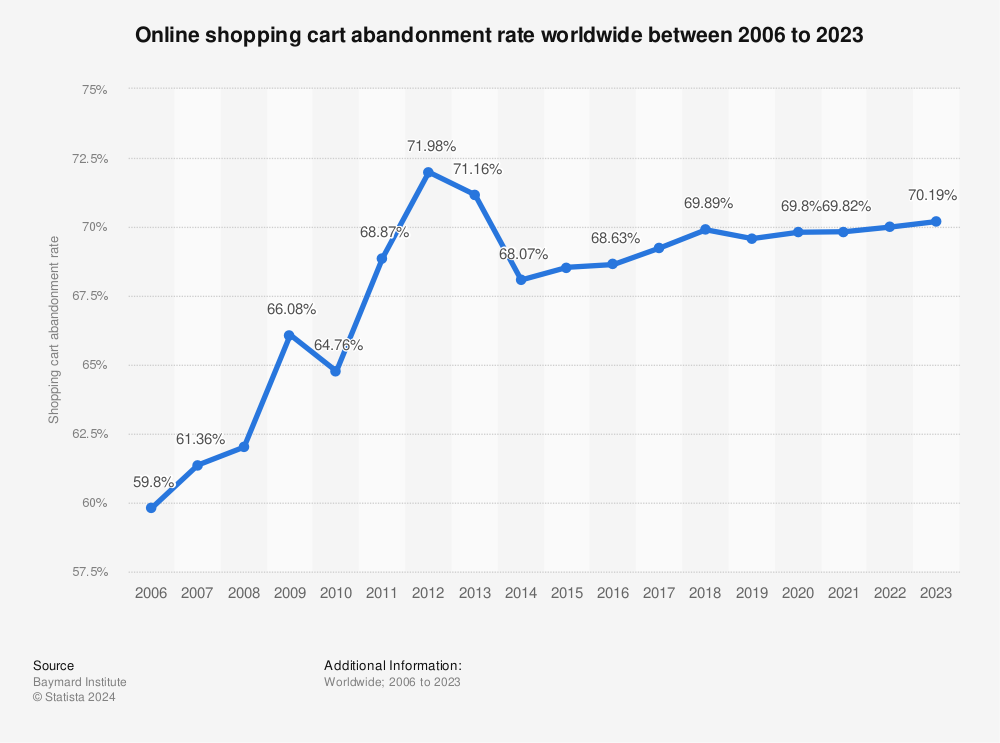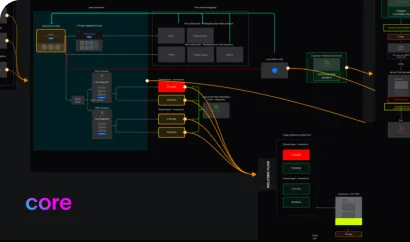





4 minute read
Discover the 6 universal cart abandonment rationales
Use the CARs exercise to lower abandon cart rates
Note: this guide is part of a three-part series on reverse-engineering your customer. To start from the beginning click here.
Background
If you’re searching for lost revenue, this is the best place to start. Over the next 5 minutes, we’ll cover the top 5 reasons prospects abandon their cart – and get you started with solutions for each. This is the same process we use in our Core program to decrease cart abandonment by up to 20%. Use this calculator to convert that to revenue.
Before we dig in, let’s review a few abandon-purchase KPIs1:
- In 2023, 70% of shoppers abandoned their carts. This means that only three out of ten prospects who fill their shopping cart actually convert.
- Mobile cart abandonment is the highest of all devices: 85.65%. Mobile traffic also accounts for more than two-thirds of all eCommerce sessions, at 68%. This makes your mobile cart the likely culprit for most lost revenue – and also the biggest opportunity,
- Social media is the traffic source with the highest cart abandonment rate, at 91%. Sorry, influencers. Remember that prospects are in ‘doom-scroll’ mode when they discover your product on social media. It’s early in the buyer journey, so these visitors are gaining awareness of the product you offer, rather than being ready to complete a purchase.
With the average abandon cart rate at 70%, you’d think checkout flows would be the number one priority for most eCommerce managers. Remember that the checkout process is the ultimate bottleneck in a customer journey: no matter how many campaigns you send, partnerships you launch, or influencers you hire – a poor checkout experience will always bleed revenue. But as strange as it sounds, checkout optimization is often a back-burner objective, pushed down the road quarter after quarter. Seriously? What’s going on here?
The problem is that most marketing focuses on short-lived campaigns, rather than programatic growth in the funnel. Campaigns are high lift and high return, yet carry a low shelf life – a quarter at most. Brands have very few stakeholders looking holistically at the full funnel, and the ones that are supposed to get tied up managing executors for the campaigns. It's a vicious cycle.
If marketing managers spent as much time optimizing the checkout flow as they do sending organic emails, building landing pages, and launching social messaging, the efficacy of all these campaigns would be drastically increased. But the industry’s current approach would be like if Eluid Kipchoge (world's fastest man) chose to run the Berlin Marathon in a pair of Vans.
Let’s be clear: abandon cart initiatives are not back-burner objectives for next quarter. Decreasing cart abandonment is the number one way to impact your most valuable storefront KPI: Conversion Rate (CVR). As far as low hanging fruit goes, this is bottom-branch material.
What are the CARs?
Cart Abandonment Rationales (CARs) are the top reason(s) your buyers don't convert. There are 6 CARs, and while a high-converting storefront should solve for each of them, the solutions will be different for every brand.
- Shopper encounters UX/UI friction
- Shopper assesses price as prohibitive
- Shopper doesn’t understand how product works
- Shopper doesn’t find the product or brand credible
- Shopper doesn’t recognize product solves their problem
- Shopper is distracted or sidetracked
Solving for each CAR
There are a myriad of ways to solve for each CAR, and unlimited outside factors leading to cart abandonment and/or conversion. For example, cart abandonment drops consistently 12 times a year, in the last few days of each month – an impact of paydays that start rolling in around that time. These outside factors are not something you should take into consideration.
To solve for CARs, we deploy and test a mix of cart User Interface (UI) interventions, updates to abandon cart email + sms flows, and storefront tools. Unlike Shopper Decision Questions, CARs are more-or-less universal, but CAR solutions vary from brand-to-brand. The exercise (example below) will help provide a structure for proposing those solutions.
The CARs exercise will inform execution that goes beyond cart touchpoints. For example, one CAR #4 Credibility solution is to apply a press-bug graphic and reviews in the cart ux, and in abandoned cart email flows. But by including this information higher in the funnel too – such as the product listing page and welcome email flows – you may be able to eliminate the CAR before shoppers even get to the checkout flow. That’s why we recommend looking at CARs, SDQs and SITs all at once, and leveraging the learnings in aggregate.
Note: go one step further by comparing your CARs to your buyer personas. With your Persona Map in front of you, walk through the cart from the perspective of each buyer, and imagine how (if) they’ll encounter each CARs.
Signal to Noise
Remember there’s a risk of adding friction each time you introduce new information to the user experience. Every new message either A: push the prospect closer to conversion, or B: become a bottleneck in their journey. This is called the signal-to-noise ratio, and balancing it is the key to a high-converting funnel.
By implementing all your CAR interventions at once, you may inadvertently overwhelm the prospect at the most critical moment in the sales funnel. Begin with CARs #1 - #3, since they are typically the lowest lift and can be quickly tested. From there, work your way through the rest, evaluating A/B results as you go.







